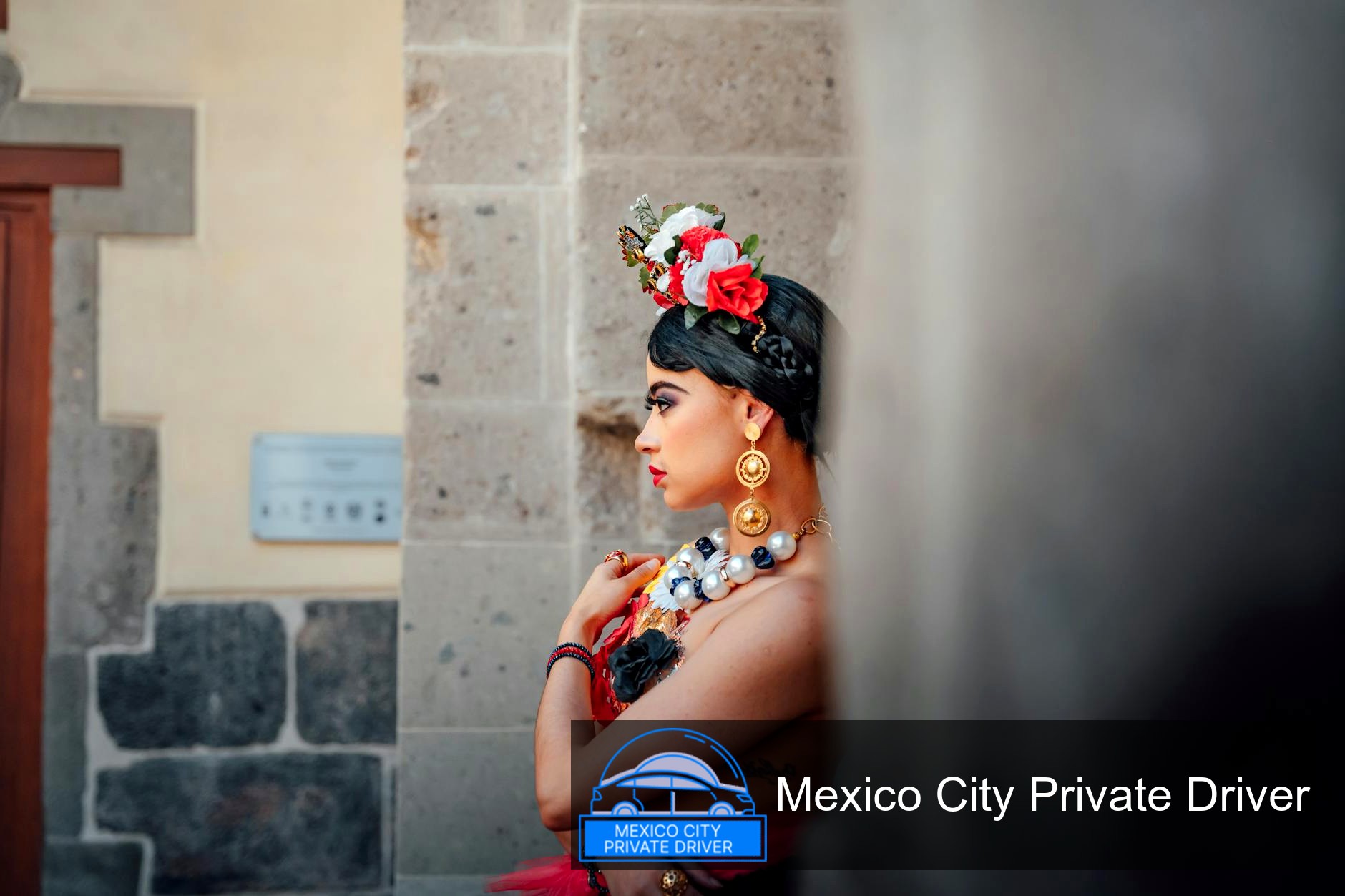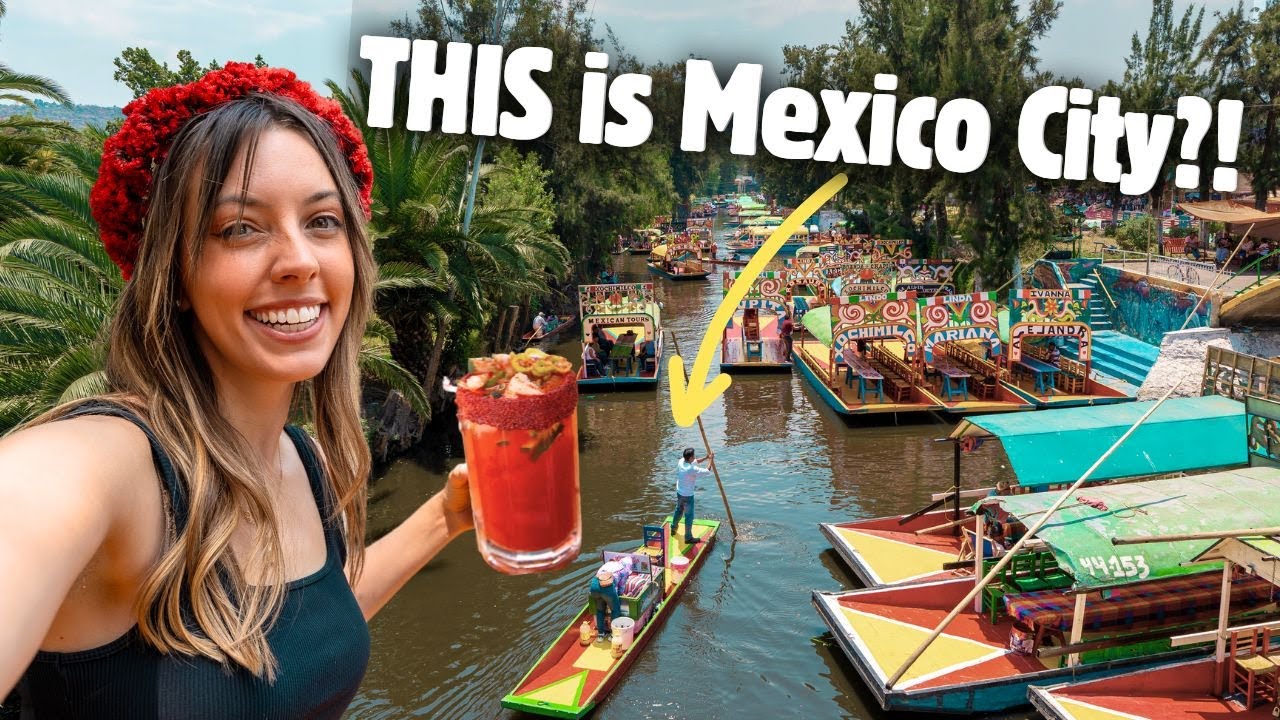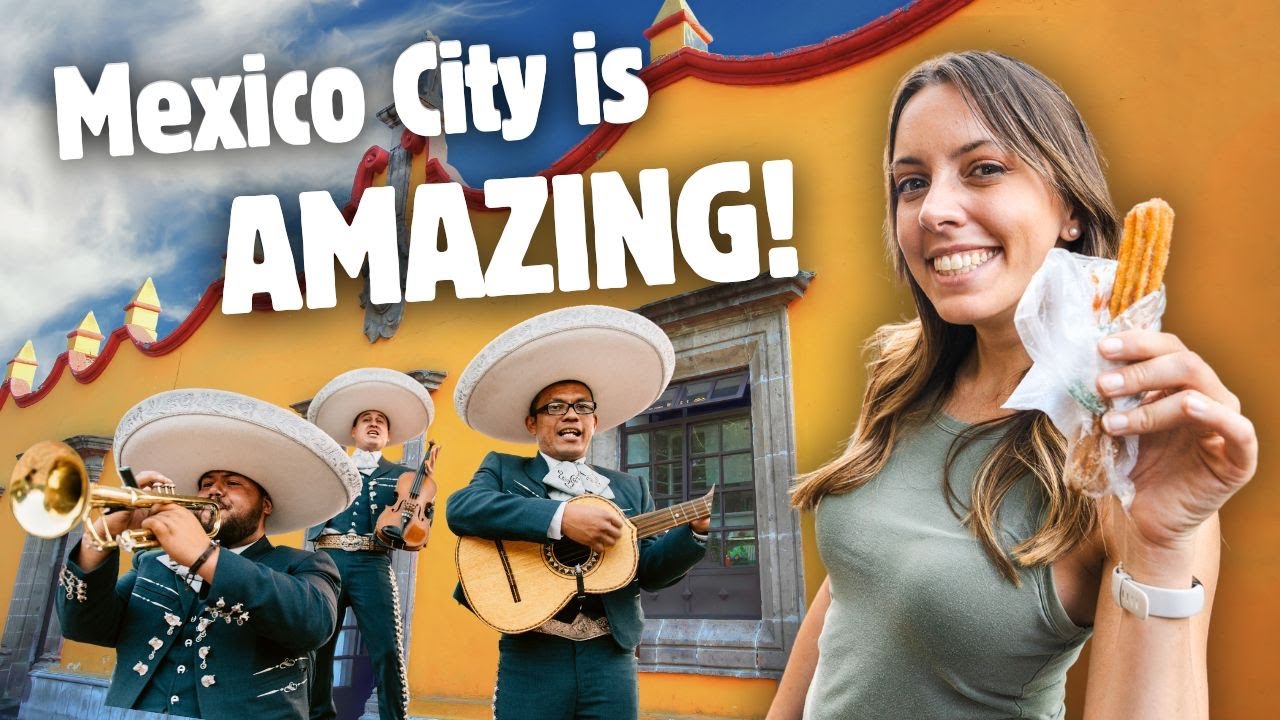TL;DR I’ve visited the Casa Azul more than once and learned how to turn a potentially frustrating pilgrimage into an unforgettable experience: buy timed tickets in advance (the museum doesn’t sell at the door), aim for the earliest weekday slot or the special “Noche de Museos” if you want a different vibe, allow 90–120 minutes, respect photography rules (mobile photos without flash are included with your ticket), and leave time to explore Coyoacán’s plazas and markets. Official hours, ticketing rules and admission categories are set by the museum and ticketing site—check them before you go.
Museo Frida Kahlo Mexico City: Insider Tips for an Unforgettable Visit in 2025
I remember the first time I stepped through the cobalt-blue gate of La Casa Azul: the courtyard smelled of earth and jasmine, and every room felt like a biography in objects. Over several returns I learned the logistics and small behaviors that make a visit smoother and more meaningful. Below I share those lessons alongside the facts you need in 2025—synthesizing what the museum and the official ticketing platform publish, and what veteran travelers and guides consistently advise.
Why La Casa Azul matters (and what you’ll actually see)
Casa Azul is not a generic gallery; it’s an intimate historic house museum where Frida Kahlo was born, worked and died. The building belonged to her family from the early 20th century and was converted into a museum in the late 1950s—Diego Rivera was instrumental in transforming it into a public space dedicated to Frida’s life and work. The collection mixes paintings with everyday objects: clothing, corsets, jewelry, photographs, letters and personal effects that make Kahlo’s story vividly tangible.
In practical terms that means you don’t only encounter canvases—you walk through her bedroom, see the mirror she used to paint from bed, inspect dresses and corsets that shaped her public image, and move through the family’s lively courtyard garden. The museum’s holdings expanded notably when a long-hidden archive of photographs and documents surfaced in the 2000s, deepening the narrative on display.
Key facts at a glance (from the museum and ticketing site)
- Location: Londres 247, Col. Del Carmen, Coyoacán, CDMX.
- Opening pattern: closed Mondays; most Tuesdays, Thursdays–Sundays open 10:00–18:00; Wednesdays open at 11:00 (with a monthly extended “Noche de Museos” on the last Wednesday). Confirm exact hours on the museum’s site before you travel.
- Admission: the museum publishes specific categories and discounted rates (general admission, resident discounts, student/teacher reduced prices, free entry for children under six and for people with disabilities). The official site and the authorized ticketing portal list current prices and categories—there is no walk-up ticket sales policy.
- Ticketing: the museum’s ticketing platform handles timed online tickets; kiosks in nearby Coyoacán also sell official tickets. The museum states it does not sell tickets at the on-site box office.
- Photography: mobile-device photography without flash for personal use is allowed under the terms of admission; commercial uses require separate authorization from the museum’s administering trust.
I base those operational points on the museum’s official visit pages and the Boletos Museo Frida Kahlo ticket platform (which explicitly lists hours, admission categories and the “no box office sales” policy). I recommend checking those sources right before your trip because hours and special closures change on holidays or for programming.
Best time to visit — crowd management and mood
Coyoacán is perpetually popular with locals and tourists, and Casa Azul competes with Mexico City’s National Museum of Anthropology as one of the most visited museums in the capital. That means timing and expectations matter.
- Weekdays are calmer than weekends—Tuesdays and Thursdays are particularly good if you can manage the morning slot.
- Opening hour entry is often the least crowded; arriving slightly before your timed slot helps you be among the first in your group.
- The museum’s monthly “Noche de Museos” (last Wednesday) extends hours and creates a lively, social atmosphere that’s fantastic for people-watching and an evening vibe, but it’s also busier and more crowded.
- Plan for 90–120 minutes unless you’re a specialist researcher; that gives you time to see rooms, the garden, and the temporary exhibits without rushing.
What to bring — minimalist packing for a better visit
- Timed-ticket confirmation (printed or screenshot) and a government ID if you intend to claim a discounted/resident rate.
- A charged phone for photos (flash is not allowed) and maps; bring headphones if you use audio apps or an audio guide—check availability in advance.
- Comfortable shoes: the museum is compact but you’ll stand and move across different floors and courtyard surfaces.
- Small bag—large backpacks can be inconvenient in the narrow rooms and may be subject to inspection. (I could not confirm a public cloakroom at the museum; if you need to store larger items, ask the ticket kiosk or your hotel.)
One comparative table: Best visiting options
| Visit Option | Best for | Typical crowd level | Pros | Cons |
|---|---|---|---|---|
| Early morning (opening) | Photographers, contemplative visitors | Low | Calmer rooms, better photos, cooler courtyard | Limited café/nearby vendor hours early |
| Midday (11:30–14:00) | Casual visitors combining lunch/market | Medium–High | Combine with Coyoacán market and plazas | Lines and tighter rooms; less quiet |
| Late afternoon (16:00–closing) | Visitors who prefer a relaxed start | Medium | Golden light in courtyard, fewer families leaving | Shorter time before closing |
| Noche de Museos (last Wednesday) | Culture-night seekers | High | Extended hours, special programming | Crowded—less quiet, busier sidewalks |
Practical Guide
Follow these steps to minimize hassle and get the most out of your visit.
- Step 1 — Check official hours and closures: Visit the Museo Frida Kahlo official site (or the authorized ticket portal) to confirm opening hours and any special closures or reduced hours for holidays. The museum posts schedules and holiday closures—always verify within a day or two before your trip.
- Step 2 — Buy a timed ticket in advance: The museum’s ticketing partner sells timed tickets online and at a small set of authorized kiosks in Coyoacán. The museum explicitly states that they do not sell tickets at the on-site box office—so pre-purchase to avoid disappointment.
- Step 3 — Arrive early for your slot: Plan to be at the entrance 10–15 minutes before your scheduled time. Security checks are standard and lines can form even with timed tickets.
- Step 4 — Move through rooms with consideration: The Casa Azul rooms are intimate; let others pass to photograph or study an object, and avoid blocking narrow doorways. Photography with mobile devices (no flash) is typically allowed for personal use—confirm on arrival.
- Step 5 — Spend time in the garden: The courtyard and garden are integral to the experience—don’t rush through them. They’re where the house breathes and where many visitors find the clearest connection to Frida’s life.
- Step 6 — Combine nearby experiences: After your visit, walk to the Coyoacán plaza, Mercado de Coyoacán, or other local museums. If you’re interested in Trotsky’s history (he is documented as a visitor to the house in historical accounts), the nearby Museo Casa de León Trotsky may be a logical add-on.
- Step 7 — Respect conservation and use permissions: If you want to photograph for publication or professional use, you will need formal authorization from the museum’s administering trust—personal mobile photography is one thing; commercial or editorial use is another.
Money, discounts and ticketing specifics
The museum publishes admission categories that include a general rate and multiple discounted tickets (students and teachers with valid ID, residents, older adults and young children). People with disabilities and children under six typically have free admission. Because prices and categories can be updated, use the official site or the ticketing portal to see current rates before you buy. The ticket terms also clarify the scope of permitted photography (mobile, no flash for personal use) and note that special permissions are needed for other uses.
Accessibility and family visits
The museum indicates entry rules and concession categories for people with disabilities; some rooms are on an upper level and house layout is historic and intimate, so access can be more challenging than in modern museums. If you have specific accessibility needs, contact the museum in advance—official contact information is available on the museum and ticketing pages. Families with young children should note that kids under six commonly enter free, but the rooms can be fragile and narrow—plan accordingly.
How to behave inside (practical museum etiquette)
- Do not touch artworks or display cases.
- Turn phones to silent and speak quietly; rooms are small and sound travels.
- Follow instructions from museum staff; they’ll tell you about photography rules or temporary closures inside.
- Use designated paths—historic houses often have restricted routes to protect floors and objects.
Nearby recommendations (food, markets, and combo stops)
Coyoacán is one of Mexico City’s most charming neighborhoods: pedestrian-friendly plazas, taco stands, and traditional markets are all within walking distance. The Mercado de Coyoacán and Plaza Jardín Centenario are great places to eat and take a breath after the museum. If you’re building a thematic day, consider pairing your visit with other small museums in the neighborhood or a stroll through tree-lined streets. For logistics, official museum pages list authorized ticket kiosks in Coyoacán where you can pick up tickets if you prefer buying in person ahead of entry.
What I wish I’d known before my first visit
Two things stand out from my visits: one, the emotional intensity—La Casa Azul is intimate and can feel overwhelming in the best way, so allow quiet time in the garden to process; two, the logistics—without a timed ticket you might be turned away, and arriving late for your slot is stressful because sessions are strictly managed. Planning those two elements beforehand removes a lot of friction and lets you enjoy the house instead of navigating lines.
FAQs
Can I buy tickets at the museum on the day of my visit?
No—according to the museum’s ticketing information, the Frida Kahlo Museum does not sell tickets at the on-site box office. Timed tickets must be purchased through the authorized online ticket platform or at select official kiosks in Coyoacán. I always buy mine online to be safe.
Are photographs allowed inside the museum?
Yes—personal photography with mobile devices is generally permitted without flash, and that permission is outlined in the museum’s ticket terms. Commercial or editorial photography requires prior authorization from the museum’s administration. If you’re unsure your use counts as commercial, ask the museum ahead of time.
What are the museum’s opening hours?
The museum is closed on Mondays. Typical hours are roughly 10:00–18:00 most days, with Wednesdays opening at 11:00 and a monthly extended “Noche de Museos” on the last Wednesday. Because the schedule can vary for holidays and special events, check the official Museo Frida Kahlo website or the ticket portal for the exact hours on your intended date.
How much time should I budget for a visit?
Plan 90–120 minutes for a comfortable visit. That allows time to move through the rooms, linger in the garden, read exhibit labels, and take photographs. If you’re a researcher or especially detail-oriented, allocate more time and contact the museum ahead of time about research access options.
Are there discounts for residents, students or seniors?
Yes—the museum publishes reduced rates for students and teachers with valid ID, residents with official ID, and lower fees or free entry for older adults and children in specific age brackets. People with disabilities and children under six commonly have free admission. Confirm the current categories and ID requirements on the museum’s official pages before buying.
Is the museum accessible for visitors with mobility limitations?
The Casa Azul is a historic home with intimate rooms and levels; the museum does provide accommodations, and certain admissions categories cover people with disabilities. If you require specific accessibility services, contact the museum in advance—official contact info is provided on their site. I recommend confirming exact arrangements ahead of your visit.
Can I visit the Casa Azul and other Coyoacán attractions on the same day?
Absolutely. The neighborhood is compact and walkable, making it easy to combine the museum with the nearby plaza, markets, cafés, or other small museums. Expect to spend part of a day in the area if you want a relaxed experience.
Final thoughts
Visiting Museo Frida Kahlo is part art-viewing, part pilgrimage, and part a walk through someone’s lived life. If you plan ahead—buying timed tickets, choosing the right time of day, and accepting that the museum’s intimacy brings both emotional resonance and practical constraints—you’ll get far more out of the experience. My best piece of advice: let yourself pause in the blue courtyard. That’s where the house breathes and where Frida’s life feels most present.
If you’d like, tell me the dates you’re considering and I’ll check the museum’s official hours and ticket availability for those days (I can do that now, but I’ll rely on the museum’s site and the ticketing platform for the most up-to-date info).
Martin Weidemann is a digital transformation expert and entrepreneur with over 20 years of experience leading fintech and innovation projects. As a LinkedIn Top Voice in Digital Transformation and contributor to outlets like Forbes, he now brings that same expertise to travel and mobility in Mexico City through Mexico-City-Private-Driver.com. His focus: trustworthy service, local insights, and peace of mind for travelers.



